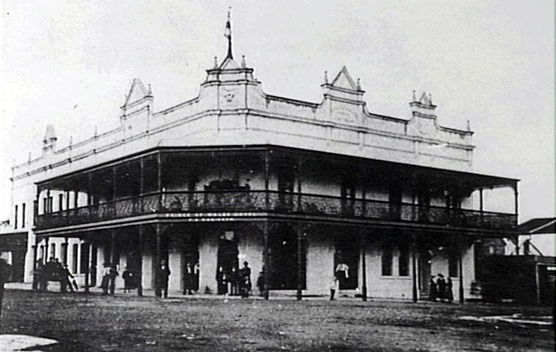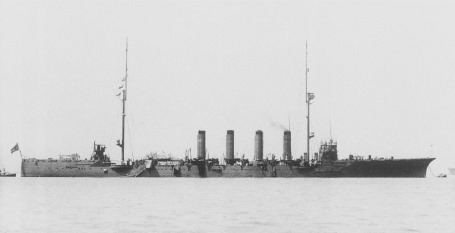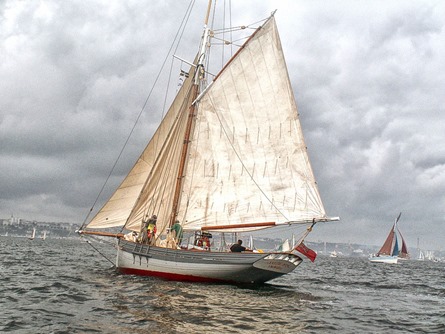27 April 2017
26 April 2017
25 April 2017
HMAS Creswell
Anzac Day
19 April 2017
18 April 2017
On this day April 18, 1805
| The Cutter Nancy. |
| Example of a typical cutter |
| The Nancy was wrecked on 18 April 1805 near Jervis Bay.
|
|
|
 |
17 April 2017
14th April 1943 - A mid air collision claims the lives of 8 young airforce pilots over Jervis Bay.
16 April 2017
Sailors bones lay bleaching on the shore of Jervis Bay.
| 15th April marks the anniversary of the death of Robert Johnson. |
| It took 8 years after the tragic death of Robert Johnson for his remains to be shown the respect this young man deserved. |

|
| 1900 - Captain Dicken, of the Royal Arthur, set about giving Robert Johnson a properly marked grave and show him the long overdue respect he deserved. He went about raising by subscription amongst the naval people a sufficient sum to have the body of young Johnson removed to a point which overlooks the anchorage of the men-of-war at Tapala Point. The crew of the HMS Boomerang were assigned the sad duty of removing the body from the grave. The government of the day agreed, and a beautifully designed monument was set above the grave. The Sharpshooter-class torpedo gunboat, HMS Boomerang 1900 |
| I covered more of the story in 2014 which you can read here. http://jervisbaymaritimemuseum.blogspot.com.au/search?q=robert+johnson |
 |
13 April 2017
Huskisson snippets 1919
11 April 2017
Monday 7th April 1924
On this day - April 11 1901, Shoalhaven.
 |
| 1901 – The Prince of Wales Hotel in Junction Street, Nowra, was a two-story building of wood, the partitions on the upper storey being of canvas covered in paper. |
 https://timegents.com/2015/07/09/bull-in-hotel-at-nowra/ https://timegents.com/2015/07/09/bull-in-hotel-at-nowra/ |
| The Prince of Wales was located on the corner of Junction Street and Kinghorn Street, where the clothing store Best & Less is today. |
 |
10 April 2017
S.S. Easby.
| 1905 – Encountered a severe gale off Jervis Bay. |
 |
| Monday 1st of September 1905 - It was midnight before the well known coastal collier S.S Easby was ready to leave the Newcastle Port on one of her regular trips to Melbourne, under the command of Captain Prideaux, she was only three hours into her voyage when she ran into a terrific gale that was sweeping the coast. The vessel was awash with immense bodies of water, coming right over the vessel, flooding the decks and doing severe damage. At this time the Easby was burying herself in the sea and there was no opportunity of using any of the sails as the wind was too far ahead, the crew went about their duties at extreme risk of being washed overboard. The cabin skylight and companion were smashed and the hand steering wheel was carried away, the cabin flooded breaking the panels of one of the deck houses. Several members of the crew who were attempting to cover up the broken skylight and prevent water from flooding the cabin were caught in the seas, and one of the men was badly injured about the legs. |
| Captain Prideaux when asked about the voyage said. "He had not experienced such a long continuance of heavy weather on the coast in five or six years. It was a continual blow for three days, and blowing very hard throughout. |
 S.S. Easby S.S. Easby |
| Built 1873 - 1 x 2 cyl. compound engine, single shaft, 1 screw Length: 76.4 m.; Owned by J. Paterson & E. Newbigin; Built at Richardson, Duck & Co. in 1873. Registered at Melbourne. Registration no. Melbourne 8/1879. 1,489 gross 969 net tons. Lbd: 250'7" x 32' x 21'4". (76.4 x 9.8 metres) Iron steamship, collier built by Richardson Duck Thornaby Stockton, England |
| --------------------------------------------------------------------- |
| 1952 - 47 years later - S.S. EASBY (2). Adrift off Jervis Bay. |

|
 |
| 47 years after the original S.S.Easby was beaten and battered off Jervis Bay, S.S. Easby 11 found itself in a similar predicament. The worst fears were held for the missing ship and it's 43 crew, including 41 from Victoria, nothing had been heard of the vessel and the coast was being lashed by severe gales. Headlines like these had the families and employers praying for the safe return of their seamen.. |
 |
| The 3341 ton, coastal collier S.S. Easby loaded with 5200 tons of coal was on her way from Newcastle to Melbourne. A steel single screw steamship , She was built at Walsh Island Sydney for the Australian Governments Commonwealth Line of steamers and named the Dinaga in 1920. She was then sold to Huddart Parker and Co, Melbourne in 1926 and renamed Colac, She was renamed Easby when she was bought by James Patterson Pty. Ltd, in 1951. Her master A.E. J. Caines of Williamstown was regarded as one of Australias finest captains. |
 Sea going rescue tug St Giles Sea going rescue tug St Giles |
| 1956 – The Easby was purchased by J.Manners & Co (Hong Kong) and renamed Clyde Breeze, she was eventually scrapped in 1959. REF: http://www.flotilla-australia.com/jpaterson.htm |
 |
6 April 2017
James Craig – Jervis Bay.
HMAS Anzac – Jervis Bay.
 |
| HMAS Anzac is the first of her class and a modern warship, capable of operating in a multi-threat environment. Anzac's design is based on the German Meko 200 Class that uses modular construction methods. A feature of this method was the ability to share the construction of the 8 Australian and 2 New Zealand vessels throughout Australia and New Zealand. Anzac is fitted with an advanced package of air surveillance radars; hull mounted sonar and electronic support systems that interface with state-of-the-art weapons systems. Anzac's armament comprises a five-inch (127-mm) gun, Harpoon missiles, Evolved Sea Sparrow Missiles and Ship Launched Torpedoes. |
| REF: http://www.navy.gov.au/hmas-anzac-iii |
5 April 2017
Ship Building Huskisson
| 1933 |
 |
| AWM Settree " "Pop", arrived in Huskisson in 1932 and started building large wooden ships. When his son Alfred Raymond Settree took over the business in 1948, the age of large sailing ships had passed by. Raymond Settree built timber trawlers, his reputation as a master ship builder was established. During World War 2 trawlers were requisitioned by the military for the war effort, Alf received orders from the US Army to build for them a series of small vessels to assist them in their New Guinea campaigns. Alfred Raymond Settree or "Alf " as the locals knew him," passed on his skills to his son's, John and Trevor. They continued building trawlers with John building the last timber Settree vessel the trawler Tasman Sea. The long, amazing and one time important industry of timber boat building at Huskisson came to and end when the water front ship yard on the banks of Currambene Creek was sold by the Settree's in 2014. Anyone who had anything to do with boating around Huskisson knew Alf. He was always motoring along the river, checking moorings and securing new ones. I spoke to him on many occasions while i was putting signs on vessels hauled out onto his slip-way. His old workshop was a treasure trove of shipbuilding history. |
|
|
| Alf Settree - continue reading |
4 April 2017
Ships in Jervis Bay
| This morning we have two ships in the bay, HMAS Anzac the lead ship of the Anzac-class frigates in use with the Royal Australian Navy and the Royal New Zealand Navy and the Spanish Air Warefare Destroyer Christobel Colan which remained anchored while Anzac moved back and fourth across the bay sometimes completely disappearing behind rain squalls and sea mist, occasionally the sun would peak through the clouds making it possible to take a resonable photo. |
   Caught in the early morning sun. Caught in the early morning sun. |
 HMAS Anzac. HMAS Anzac. |
 Spanish Air Warfare Destroyer Christobel Colan Spanish Air Warfare Destroyer Christobel Colan |
| There has been a long tradition of foreign ships visiting Jervis Bay. Following are accounts of Japanese and German war ships using the bay for training and target shooting as far back as 1904. 1904 German warships, live shell practice at Jervis Bay. Not everyone was impressed! |
| One report raised many an eyebrow in Sydney when an indignant newspaper correspondent disseminated the news of German Warships doing live shell practice in Jervis Bay. "For astounding though the news is to the layman, it is said that German warships when they happen to be in Sydney, sometimes go to Jervis Bay and practice shell firing there with just as much freedom as though they owned the territory. Point Perpendicular, Jervis Bay, is steep, and hence it's name, but it isn't anything like so "steep" as the idea of a foreign warship shell practising on a British coast with or without the "let" of the more responsible authorities". He went on to explain about the German fleet doing a sham fight in English waters and how the English newspapers were not at all impressed with what had happened. "But what would they have said if one or more of the vessels fired on an English Cliff with live shell?." This must be left to the imagination of those in Australia, who did they read of such a thing in "the cable" would no doubt wax a lot more indignant than they do when the cliff is washed by an Australian sea." This story suggests the Germans fired on the cliff face of Point Perpendicular. I haven't found any other evidence of this, so it may be speculation on the correspondent's behalf.
|
| 1917. Japanese Imperial Navy conducted live shell practice at Jervis Bay. On the 5th July 1917 the Cadet-Midshipmen of the Royal Australian Naval College at Jervis Bay were able, at the invitation of Rear-Admiral Yamagi, to observe these ships during gunnery and torpedo exercises. "The two cruisers were HIJM ships Chikuma and Hirado. They were light cruisers of 5,129 tons, constructed at the Kawasaki Dockyard in 1912, with eight 6″ guns and four 3″ guns, and capable of doing 27 knots. On the 5th July 1917 the Cadet-Midshipmen of the Royal Australian Naval College at Jervis Bay were able, at the invitation of Rear-Admiral Yamagi, to observe these ships during gunnery and torpedo exercises." On 26 March 1917, the British Admiralty further requested the deployment of Chikuma and Hirado to Australia and New Zealand to protect shipping against German commerce raiding operations. REF: https://www.navyhistory.org.au/japanese-gunnery-and-torpedo-exercises-in-jervis-bay-1917/ |
 |
| 1919. The Japanese Imperial navy steaming into Jervis Bay on a visit to the RAN Naval College – Photo, Commander PR Middleton |
 Japanese Cruiser Hirado, one of two Japanese ships that sailed into Jervis Bay in 1917. Japanese Cruiser Hirado, one of two Japanese ships that sailed into Jervis Bay in 1917. |
|
|
 |











